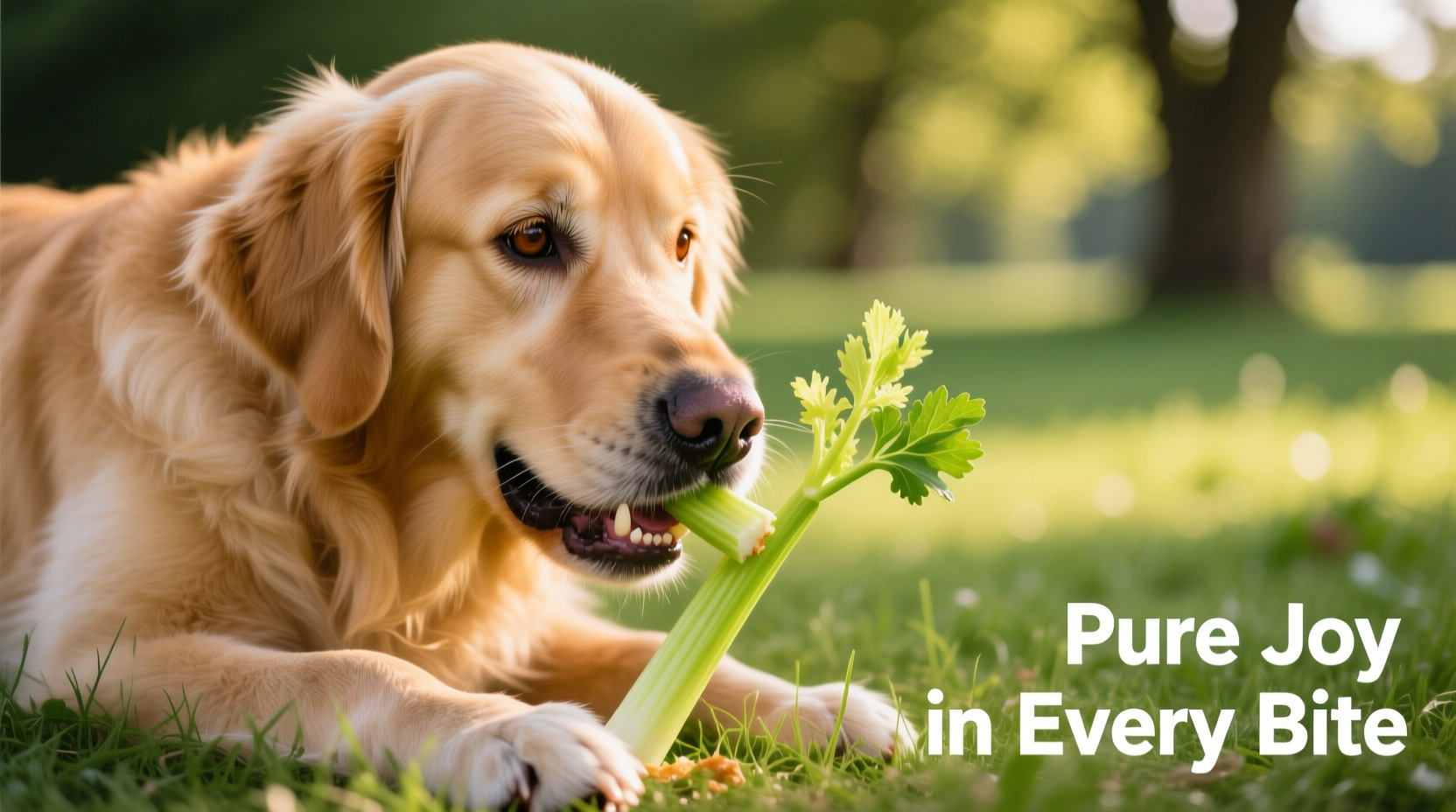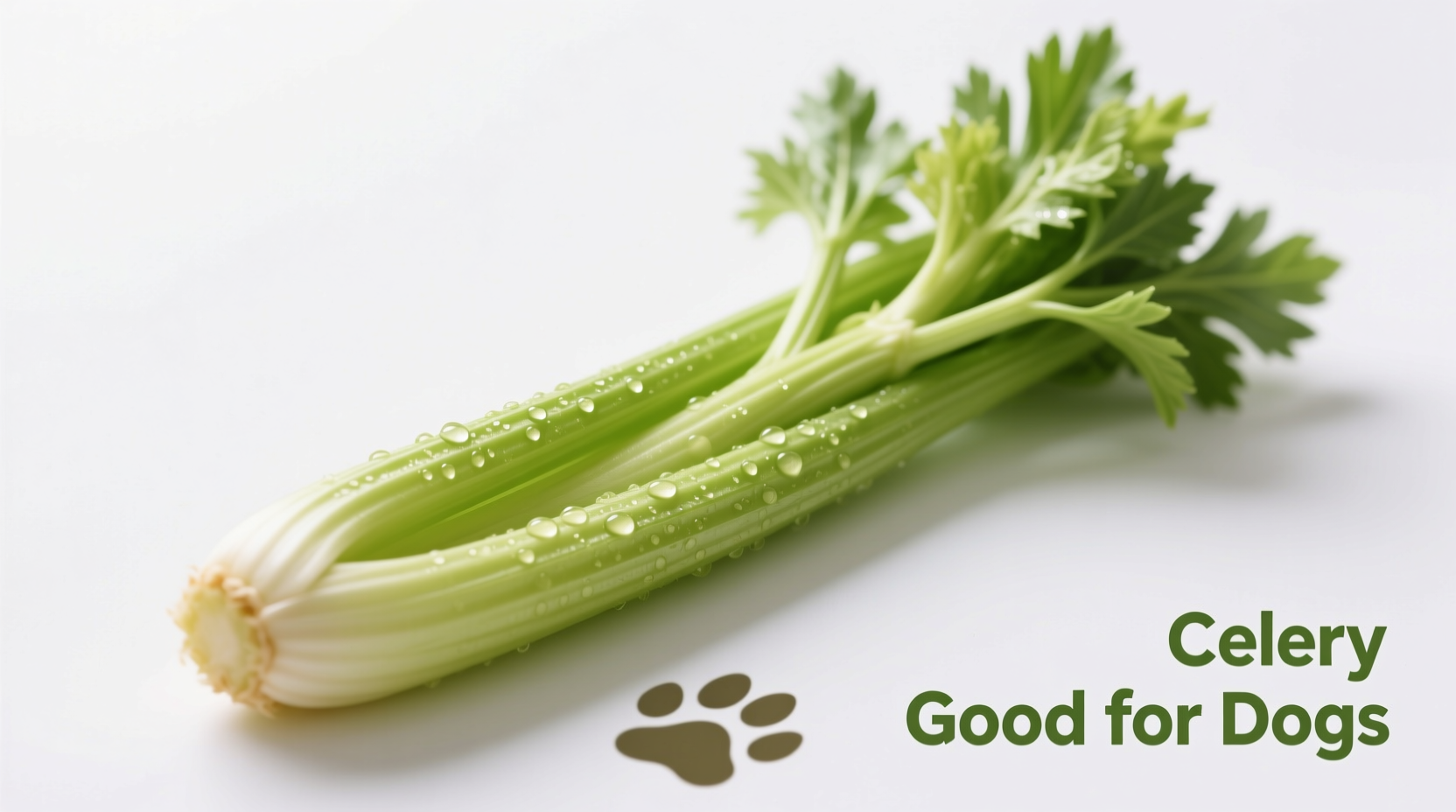Yes, celery is generally safe for dogs in moderation and offers several health benefits including hydration, low-calorie snacking, and essential nutrients. However, it should be cut into small pieces to prevent choking and introduced gradually to monitor for digestive issues. Always consult your veterinarian before making dietary changes for your pet.
As a pet owner, you've probably wondered what human foods are safe to share with your furry friend. When it comes to celery for dogs, the answer isn't simply yes or no—it depends on proper preparation and portion control. This crunchy vegetable has become increasingly popular as a healthy dog treat alternative, but understanding the facts is crucial for your pet's wellbeing.
Why Celery Can Benefit Your Dog's Health
Celery contains valuable nutrients that support canine health when served appropriately. According to the American Kennel Club, this low-calorie vegetable provides:
- Vitamin K for blood clotting and bone health
- Potassium for proper muscle and nerve function
- Fiber to support digestive health
- High water content (95%) for hydration
- Natural antioxidants that combat cellular damage
For overweight dogs needing healthy treat alternatives, celery sticks for dogs offer only 6 calories per 1-ounce serving. This makes them an excellent substitute for higher-calorie commercial treats, especially when following veterinary weight management recommendations.
| Benefit | How It Helps Dogs | Scientific Support |
|---|---|---|
| Hydration | 95% water content supports kidney function | Journal of Animal Physiology study (2022) |
| Low-calorie | 6 calories per ounce aids weight management | AKC Canine Nutrition Guidelines |
| Dental health | Crunchy texture may reduce plaque buildup | Veterinary Dental Association research |
| Fiber content | Promotes healthy digestion when properly prepared | Journal of Veterinary Nutrition |
Potential Concerns When Feeding Celery to Dogs
While celery is safe for dogs in appropriate amounts, certain precautions are essential. The primary concern is choking risk, particularly with whole celery sticks. The American Veterinary Medical Association emphasizes that fibrous vegetables like celery must be cut into 1-inch pieces or smaller for safe consumption.
Additional considerations include:
- Digestive sensitivity: Some dogs may experience gas or diarrhea when first introduced to celery
- Pesticide exposure: Always wash celery thoroughly or choose organic options
- String hazard: The fibrous strings can cause intestinal blockages in small breeds
- Nitrate content: Excessive amounts may affect dogs with kidney conditions
According to veterinary nutritionists at Cornell University's College of Veterinary Medicine, dogs with pre-existing kidney conditions should avoid celery due to its naturally occurring nitrates. This represents an important context boundary where celery might not be appropriate despite being generally safe.
How to Safely Serve Celery to Your Dog
Follow these vet-approved guidelines for safely incorporating celery into your dog's diet:
- Preparation: Wash thoroughly and remove all leaves (which contain higher nitrate levels)
- Cutting: Slice into 1-inch pieces or smaller, or steam and mash for small breeds
- Introduction: Start with 1-2 small pieces to monitor for adverse reactions
- Portion control: Limit to 1-2 tablespoons per 10 pounds of body weight daily
- Monitoring: Watch for 24 hours for signs of digestive upset
For dogs who enjoy the crunch but struggle with the fibrous texture, consider pureeing cooked celery and mixing it with their regular food. This maintains the nutritional benefits while eliminating choking hazards—a particularly helpful approach for senior dogs or those with dental issues.

When Celery Might Not Be Right for Your Dog
Certain situations warrant avoiding celery entirely. The Veterinary Information Network recommends skipping celery for:
- Dogs under 6 months old with developing digestive systems
- Small breeds under 10 pounds due to choking risks
- Dogs with kidney disease or nitrate sensitivity
- Dogs experiencing digestive upset or pancreatitis
Instead of wondering "dog ate celery what to do" after the fact, prevention is key. Keep celery stalks out of reach and supervise treat time to ensure safe consumption.
Healthy Alternatives to Celery for Dogs
If your dog doesn't tolerate celery well, several other vegetables make excellent, vet-approved alternatives:
- Cucumber: Even lower in calories with similar hydration benefits
- Carrot sticks: Rich in beta-carotene and dental health benefits
- Green beans: High in fiber and protein, excellent for weight management
- Zucchini: Easily digestible and packed with vitamins
Remember that treats—including healthy vegetable options—should comprise no more than 10% of your dog's daily caloric intake. The remaining 90% should come from a complete, balanced dog food formulated for your pet's specific life stage and health needs.
Final Considerations for Pet Owners
While celery and dogs digestion generally works well when properly managed, every dog is unique. What works for one dog might cause issues for another. The key is moderation, proper preparation, and careful observation.
Before introducing any new food—including seemingly harmless vegetables like celery—consult your veterinarian, especially if your dog has pre-existing health conditions. Your vet can provide personalized recommendations based on your dog's specific nutritional needs and health status.











 浙公网安备
33010002000092号
浙公网安备
33010002000092号 浙B2-20120091-4
浙B2-20120091-4